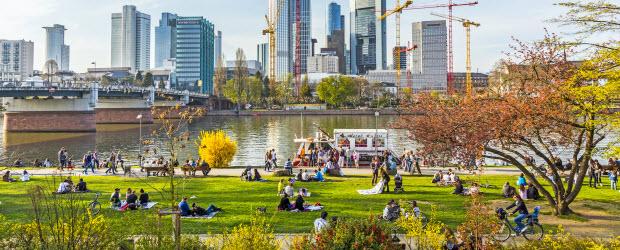Today steamgreen will focus on sustainability in the cities.
Lately indeed there are multiple articles and studies that explore this topic. Why though?
The urban dimension, indeed, is becoming more and more important in the last years.
It is a trend that has begun a millennium ago, circa, when hunters gathered into villages in order to enhance trade. However the process showed a steep increase in the last century and a half, especially in the western world.
However, also developing countries are contributing to the change, in particular after the last world war.
In deed in 2007, for the first time in history, we reached a groundbreaking level: more than half of the human population lives in a city, according to UN data. Striking is that in 1950 only 30% of us lived in urban contexts.
But there is more: projections show that by 2050 this number will reach 66%.
Now the most urbanised countries are in Northern and Latin America (82% and 80%, respectively), followed by Europe (73%).
But in the coming years Asia and Africa will play a pivotal role, showing nowadays the fastest increase among all continents.
And there is were all the eyes are staring: developing countries.
But the interesting side of the phenomenon is yet to come.
Some scientists and researchers claim that we are actually about to experience a kind of new, “thrown back” middle ages period, where cities, instead of countries are gaining importance and power.
McKinsey, a consulting company, estimated that indeed only 40 cities in the world are responsible for over 2/3 of global economy and most of its innovation. And moreover in the coming years about 50 trillions USD will be fuelled into urban constructions.
So their power is just about to be strenghtened.
Indeed, if we take into consideration megacities, which are defined as urban agglomerations featuring more than 10 millions inhabitants, after all this idea of “city-state” does not even sound so wrong: for example the metropolitan area of Mumbai, India- that is, considering its related surroundings- accounts for 100 millions people.
An interesting point made was Parag Kannah of the Huffington Post.
Imagine if a country like Italy ( remember that it still belongs to the list of G20) would disappear from the globe.
And now picture Hong Kong, NYC or London disappearing.
Which of the two events would affect more (of course, negatively) the world economics?
I am sure that everybody agrees on the enumerated cities.
It is in this framework that cities become central players when it comes to sustainability.
How can they be sustainable and which are the most sustainable cities?
Well, the results change according to the timeline and the research considered.
For example, according to Arcadis and the center for Economic and Business Research these are the most sustainable cities in the world in the year 2016.

The chart was made in a classical way, that is by taking into consideration the Triple Bottom Line approach, which takes into consideration economic, social and envirormental welfare.
For each pillar a composite indicator was built, made of subindices, such as:
Environmental: energy consumption and renewable energy share, percentage of green spaces, recycling rates, GHG emissions, natural catastrophe risk, drinking water, sanitation and pollution.
Economic:transportation, ease of business, tourism, GDP per capita, city’s importance in global networks, employment rates and connectivity rates (broadband and mobile access).
Social: rate of life expectancy and obesity, rate of literacy and number of universities, income inequality, work-life balance, dependency ratio, crime, housing and living costs.
But there is another chart which is pretty much interesting.
Siemens and C40 awarded 10 cities around the world for innovative strategy on the path towards sustainability. For example, some examples that are very worthy of mention: Bogotà’s urban transportation system won because it moves more than 7 million people, with an innovative bus rapid transit infrastructure. Mexico City, instead was the most polluted city in the world. Therefore it adopted ProAire, an impressive comprehensive programme of reorganisation of the city, to curb the emissions.
You can find the whole article here.



